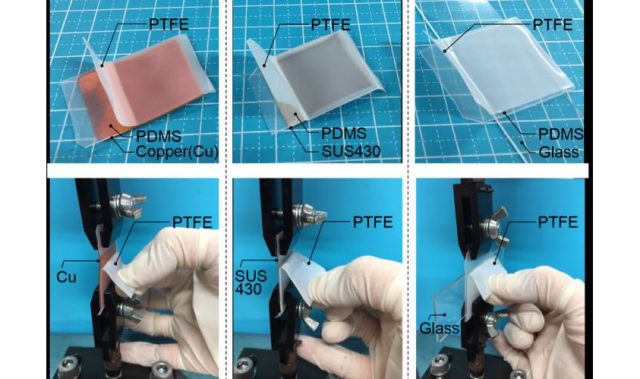
AsianScientist (Nov.25, 2019) – Scientists in Japan and China have developed a material that can selectively capture carbon dioxide (CO2) molecules and convert them into useful organic materials. The findings are reported in Nature Communications.
Human consumption of fossil fuels has resulted in rising global CO2 emissions, leading to serious problems associated with global warming and climate change. One possible way to counteract this is to capture and sequester carbon from the atmosphere, but current methods are highly energy intensive. The low reactivity of CO2 also makes it difficult to capture and convert it efficiently.
To overcome these challenges, researchers led by Assistant Professor Ken-ichi Otake of Kyoto University, Japan, in collaboration with colleagues in China, designed a porous material which has a high affinity to CO2 molecules. The material, called a porous coordination polymer (PCP), is a framework consisting of zinc metal ions and organic elements that selectively binds CO2 molecules.
Using X-ray structural analysis, the researchers noted that the organic component of the PCP has a propeller-like molecular structure which rotates and rearranges as CO2 molecules approach it. This results in slight changes to the molecular channels within the PCP, allowing it to act as molecular sieve that specifically traps CO2.
The researchers further noted that the efficiency of the catalyst did not decrease even after ten reaction cycles, and that the PCP is recyclable after its absorption capacity is exhausted.
“One of the greenest approaches to carbon capture is to recycle the carbon dioxide into high-value chemicals, such as cyclic carbonates which can be used in petrochemicals and pharmaceuticals,” said Professor Susumu Kitagawa of Kyoto University, a senior author on the study.
Hence, these findings may pave the way for advanced materials that not only reduce the amount of carbon in the atmosphere, but also generate useful products from catalysis.
The article can be found at: Wu et al. (2019) Carbon Dioxide Capture and Efficient Fixation in a Dynamic Porous Coordination Polymer.
———
Source: Kyoto University; Photo: Mindy Takamiya.
Disclaimer: This article does not necessarily reflect the views of AsianScientist or its staff.












